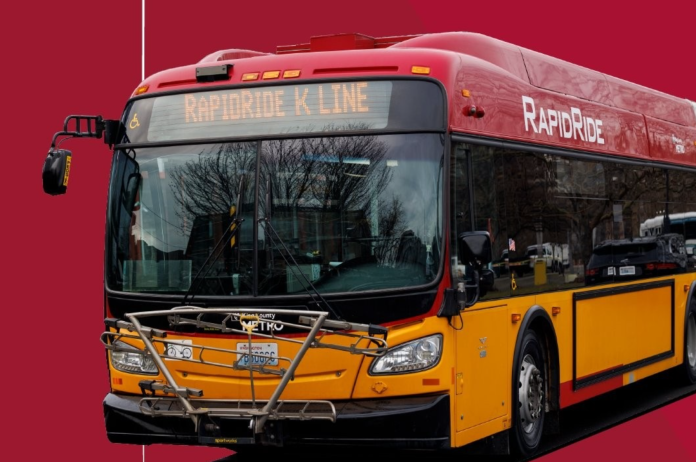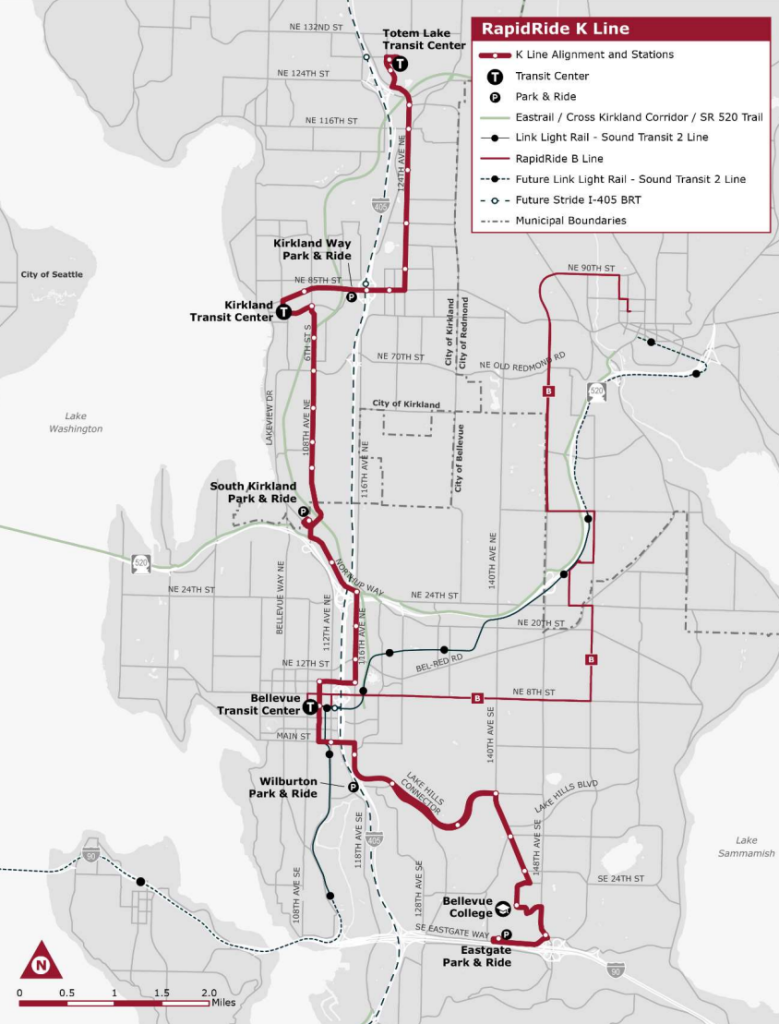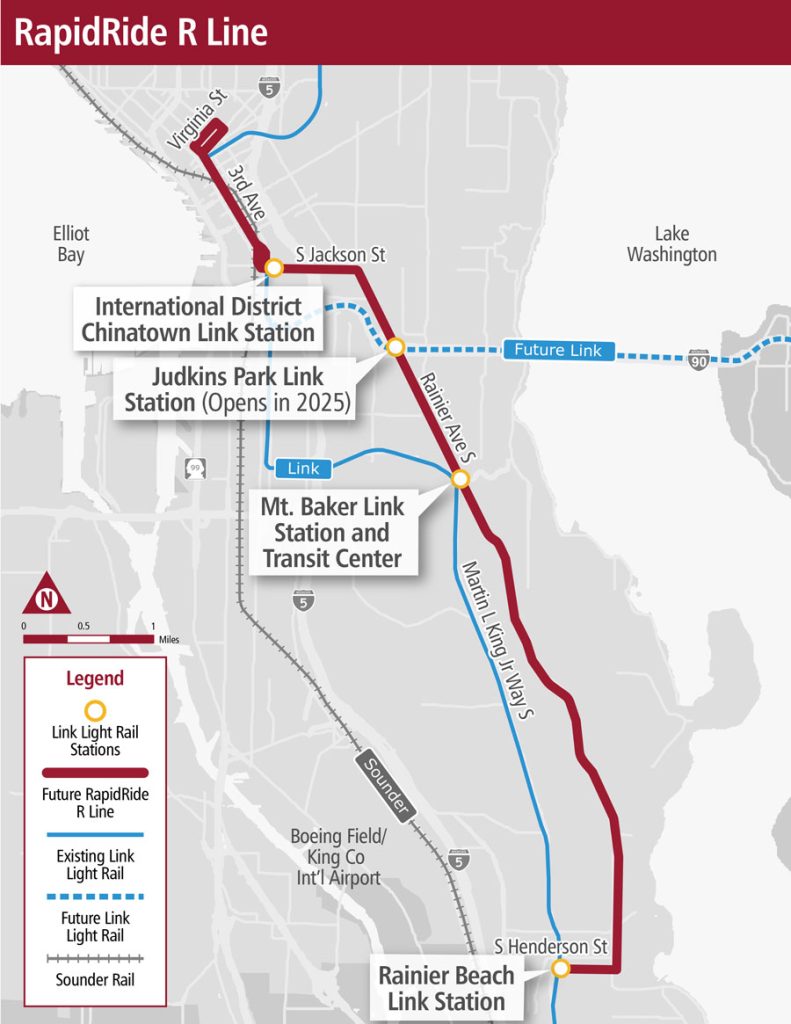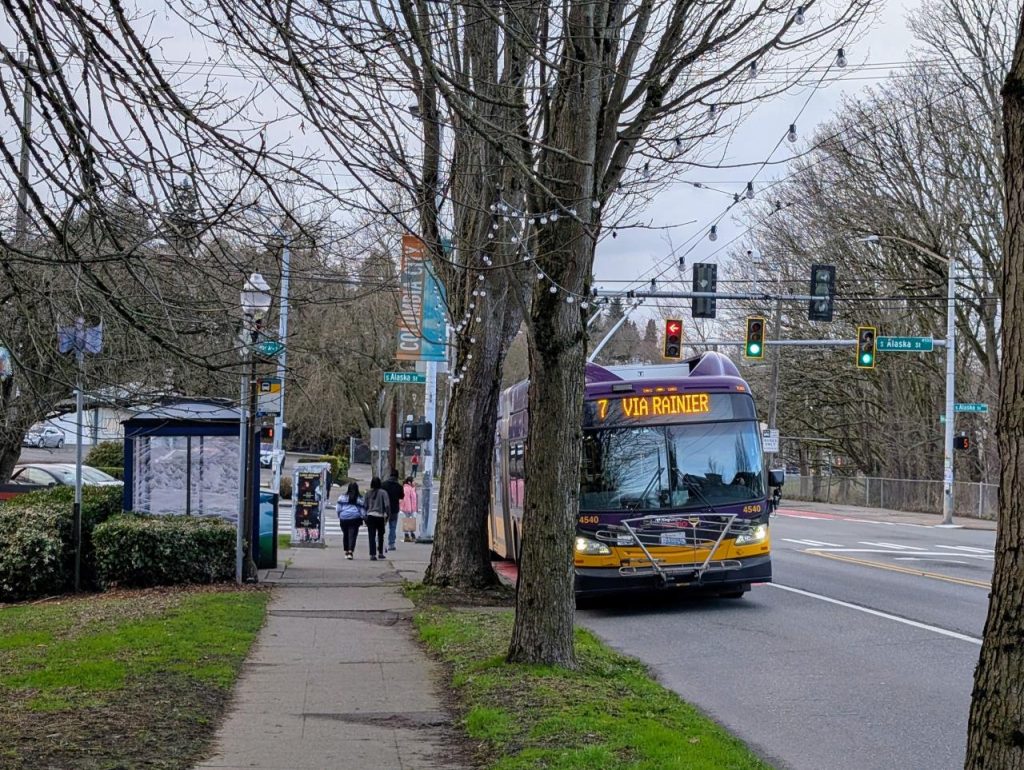
Due to changing “budget realities,” King County Metro is scaling back the expected budgets for the next two RapidRide bus rapid transit projects currently in planning, the K Line between Bellevue and Kirkland and the R Line between Downtown Seattle and the Rainier Valley. The reductions, which would slash the R Line’s budget by 25% and the K Line’s budget by 20%, are likely to result in more slimmed down projects that drop potential rider amenities or speed and reliability improvements that would otherwise have been included.
The move comes as Metro recalibrates its entire capital program in response to uncertainty over federal funding and higher-than-expected expenses, which have created a budget cliff that could hinder the agency down the road. By pivoting away from planned fleet electrification work, including the cancellation of a bus base retrofit in Tukwila, Metro now doesn’t expect to encounter significant budget shortfalls until the early 2030s.
Scaling back the only two RapidRide lines currently in planning raises major questions about the future of the overall RapidRide program, which is Metro’s main vehicle for delivering speed and reliability upgrades. RapidRide lines often rely on federal funding via Small Starts grants, which have increasingly dried up since the transit-averse Trump Administration took over.
K Line still tabbed for 2030
The K Line, the first RapidRide route planned on the Eastside in over a decade, had just taken a major milestone earlier this year when the County Council approved a locally-preferred alternative (LPA), laying out exactly what improvements were planned between Totem Lake and Eastgate. The K Line’s budget would shrink from $106 million to $85.3 million, a move that throws many of those improvements into question just months after the Kirkland and Bellevue City Councils had given their stamp of approval. Metro is still targeting a 2030 completion date for the K Line.

In getting agreement on that LPA, Metro planners had to thread the needle to get agreement from officials in both Bellevue and Kirkland. Creating dedicated space for transit in Downtown Bellevue proved a particularly thorny issue. In Kirkland, speeding up buses on 108th Avenue NE through the Houghton neighborhood has also been very contentious, with nearby residents and business owners concerned about impacts to their properties.
Now that the topic of project scope has been opened up again, those issues are back on the table — though the idea of shortening the line likely isn’t.
“Metro does not anticipate any changes to the approved alignment in the Locally Preferred Alternative (LPA) as a result of the budget reductions,” Metro spokesperson Jeff Switzer told The Urbanist. “However, Metro has not yet determined the details of how the proposed RapidRide K Line budget will affect the project scope. Metro will work with our partners to evaluate changes to the project scope to align with the new budget. The same high quality RapidRide experience – fast, frequent, and reliable service – will remain.”
“During the upcoming preliminary design phase, Metro will continue working closely with the Cities of Kirkland and Bellevue and the Federal Transit Administration (FTA) to refine project elements, identify efficiencies, and ensure the K Line continues to meet RapidRide standards for speed, reliability, and customer experience,” Switzer continued.
R Line delayed again
The R Line, which would upgrade the Route 7 between Rainier Beach and Downtown Seattle, is much further behind the K Line in planning, with no locally-preferred alternative in sight. The $123 million budget Metro had been eyeing will drop to $91.2 million, slightly above the K Line’s budget.
According to the county’s budget summary, scope changes for the R Line will include “revisiting planned roadway reconfigurations, station locations, and signal upgrades in areas where SDOT [the Seattle Department of Transportation] has already implemented improvements.”

Unlike the K Line, the R Line is set to be delivered by the City of Seattle, and the agreement between the City and the County over how the R Line will move forward is still up in the air. SDOT has added bus only lanes to significant stretches of Rainier Avenue, along with improvements intended to improve pedestrian safety and connectivity. The City also plans a major maintenance overhaul of Rainier’s north segment as part of the newly approved Seattle Transportation Levy, but exactly how that intersects with the R Line remains unclear. With this budget, the R Line’s opening date has slipped from 2031 to 2032, the very tail end of the levy.
“Given the anticipated interlocal agreement (ILA) with SDOT, the scope, cost distribution, and timeline of the project will be refined in future budget cycles. At the time of the 2026-2027 proposed Budget to Council, Metro’s proposal to SDOT that SDOT design and deliver the R Line project remains under negotiation as part of the Metro/SDOT partnership agreement. However, Metro will remain financially responsible for its RapidRide elements, including station amenities, transit signal priority, and service-related infrastructure,” the budget notes.

The R Line’s 2032 timeline opens up the possibility of a more friendly environment for federal grants if a new administration takes over in 2029. Perhaps more federal help would allow R Line to expand its scope and budget once more.
Building the R Line had actually been included in Seattle’s 2015 transportation levy, until budget issues caused the city to step back from that commitment in 2020. The 7 is Metro’s second busiest bus route in the network, a fact that made it a prime candidate for speed and reliability improvements, but a 2032 opening date means that it would take nearly two decades to actually turn into a reality. Now, it looks like the line won’t be as robust as initially planned.
The role that SDOT will play in determining which scope changes get made to the R Line remains unclear. The Urbanist has reached out to the department for more details on how the city is approaching this, and will update this story when those details are provided.
Ryan Packer has been writing for The Urbanist since 2015, and currently reports full-time as Contributing Editor. Their beats are transportation, land use, public space, traffic safety, and obscure community meetings. Packer has also reported for other regional outlets including BikePortland, Seattle Met, and PubliCola. They live in the Capitol Hill neighborhood of Seattle.

